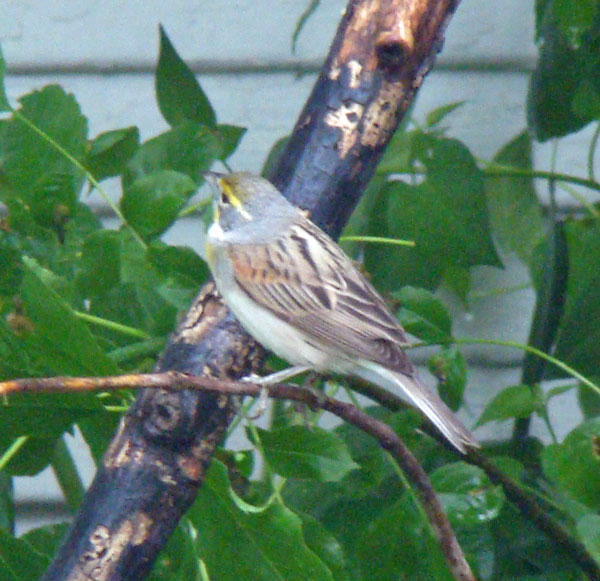Almost two weeks ago we solved the mystery of what warblers were eating in the streets of south Oak Park: Beetle larvae!
Well, the beetle larvae are not longer tumbling from our elm trees, but the warblers and thrushes and Indigo Buntings keep coming, along with tanagers and orioles and more! So, to find out what the birds are eating now, I grabbed a white plastic box lid, held it under some low elm branches, and started shaking:
Here’s what I found: Little green caterpillars! (I put the dime there. Money doesn’t grow on trees in our neighborhood.)
Just in case someone out there can identify what type of moths or butterflies these become, here are some closer views:
I can’t identify the caterpillars, but I do know they taste good to birds. During the past week, we’ve seen 23 kinds of warblers feeding in and under our elm trees:
Golden-winged Warbler
Tennessee Warbler
Orange-crowned Warbler
Nashville Warbler
Northern Parula
Yellow Warbler
Chestnut-sided Warbler
Magnolia Warbler
Cape May Warbler
Yellow-rumped Warbler
Black-throated Green Warbler
Blackburnian Warbler
Palm Warbler
Bay-breasted Warbler
Blackpoll Warbler
Black-and-white Warbler
American Redstart
Ovenbird
Northern Waterthrush
Mourning Warbler
Hooded Warbler
Wilson’s Warbler
Canada Warbler
Feeding along with the warblers we’ve seen:
Yellow-throated Vireo, Warbling Vireo, and Red-eyed Vireo
Veery, Gray-cheeked Thrush, and Swainson’s Thrush
Gray Catbird
Summer Tanager and Scarlet Tanager
Rose-breasted Grosbeak
Indigo Bunting
and Baltimore Oriole
These birds are all spring migrants. The Catbird is the only one who’s likely to stay and nest in our neighborhood. The caterpillars in our elm trees have helped them survive and refuel before the next night with southerly winds to speed them on their journey north.
Did I mention that last week we found thousands of tiny caterpillar poops on our cars each morning? The polite term for caterpillar poop is frass. This morning our cars were almost frass-free, although there was lots of bird poop on our windshields.
We’ll finally get some southerly winds later this week, so we expect most migrant birds to continue north. In their wake we expect our elms to enjoy an almost caterpillar-free summer.
Now if we could just find a biological control for the bark beetles that spread Dutch Elm Disease….






































